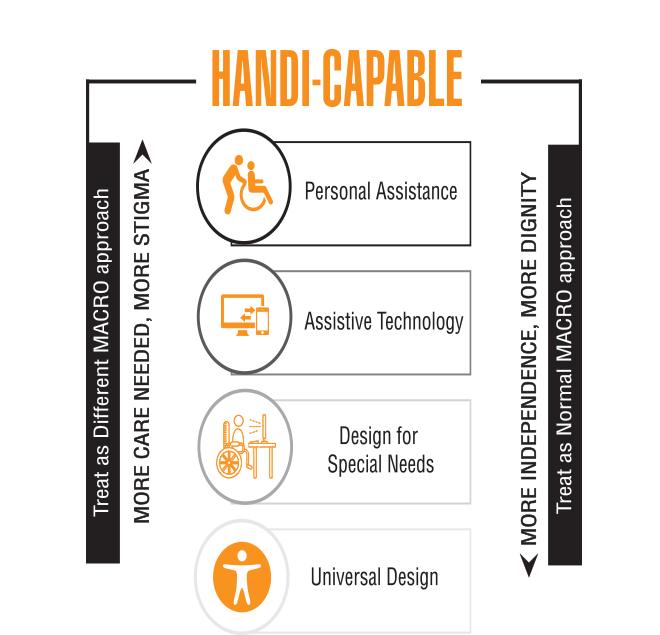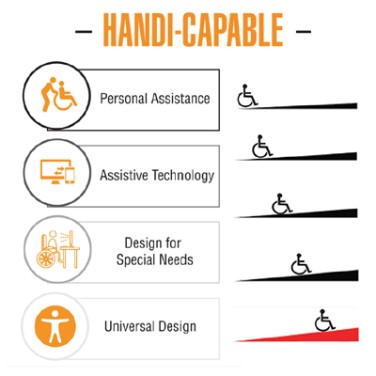The concept of Universal Design is about a new quality relationship between a diversity of users (old and young, strong and weak etc.) and human-made physical environments/objects. Universal Design goes beyond the mere provision of special features for various segments of the population (women, children, the elderly, the disabled etc.) as it also emphasizes a creative and inclusive approach to make the mainstream built environment more sustainable and better for everyone.

Here are seven attributes of an inclusive design:
EQUITABLE USE
The design is useful and marketable to people with diverse abilities.
FLEXIBILITY IN USE
The design accommodates a wide range of individual preferences and abilities.
SIMPLE AND INTUITIVE USE
Use of the design is easy to understand regardless of the user’s experience, knowledge, language skills or current concentration level.
PERCEPTIBLE INFORMATION
The design communicates necessary information effectively to the user, regardless of ambient conditions or the user’s sensory abilities.
TOLERANCE FOR ERROR
The design minimizes hazards and adverse consequences of accidental or unintended actions.
LOW PHYSICAL EFFORT
The design can be used efficiently and comfortably, with a minimum of fatigue.
SIZE AND SPACE FOR APPROACH AND USE
Appropriate size and space is provided for approach, reach, manipulations and use, regardless of user’s body size, posture or mobility.


